
Alexa Profile
The heart of personalization.
Amazon2019Alexa customers needed a way to manage what Alexa knows about them as an individual – their biometrics, preference, privacy and security settings, etc.
Role
I led design for the initiative from 0-to-1, leading multiple cross-functional teams and other designers across the Alexa organization.
Outcome
The launch of the Alexa Profile ushered in a paradigm shift, moving Alexa from an communal voice assistant to a personal one. It set the bar for profiles across Amazon by being the first profile launched for any Amazon product. The number of personalized Alexa experiences increased exponentially within the first year. It also increased voice recognition user engagement from 10% to more than 60% across all 50M+ Alexa users and 1B+ Echo-enabled devices.
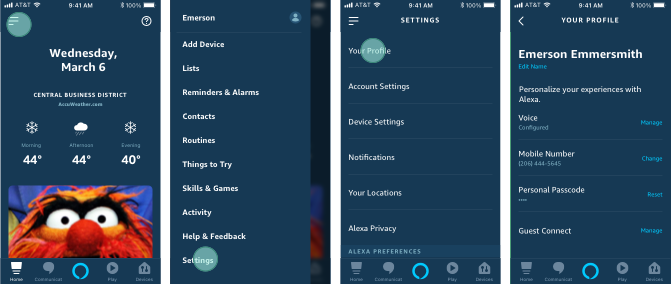
Key Challenges
A profile sounds like a trivial thing, table-stakes for any app or service. There were four key challenges I needed to overcome to figure this out:
- What's in it?
- Where's it going to live?
- How is it a platform piece?
- How will it scale?
What's in it?
Person-level profiles aren't breaking new ground, but they were new for Amazon, Alexa, and the voice assistant industry as a whole. Even though Amazon is famously known for ignoring their competition, people already have expectations when it comes to profile. Plus, I didn't need to reinvent the wheel. So, I went through deep competitive and heuristic analysis to immerse myself in the world of profiles.

Something I quickly learned is every team wanted something of theirs in the profile, even if it didn't make much sense for it to live there. For launch, I was able to narrow the MLP (minimum lovable product) features down to the basics that customer needed to manage their identity:
- Add & edit your name
- Add & manage your voice recognition
- Add & manage your mobile number
- Add & manage your guest connect settings
- Create & manage your personal passcode
I also created a large series of early concepts, which proved to be an important aspect of the process. It helped me more deeply understand the problem space, see how a profile might shape up, enabled me to apply some creativity, and serve as conversation starters with various teams and leaders.
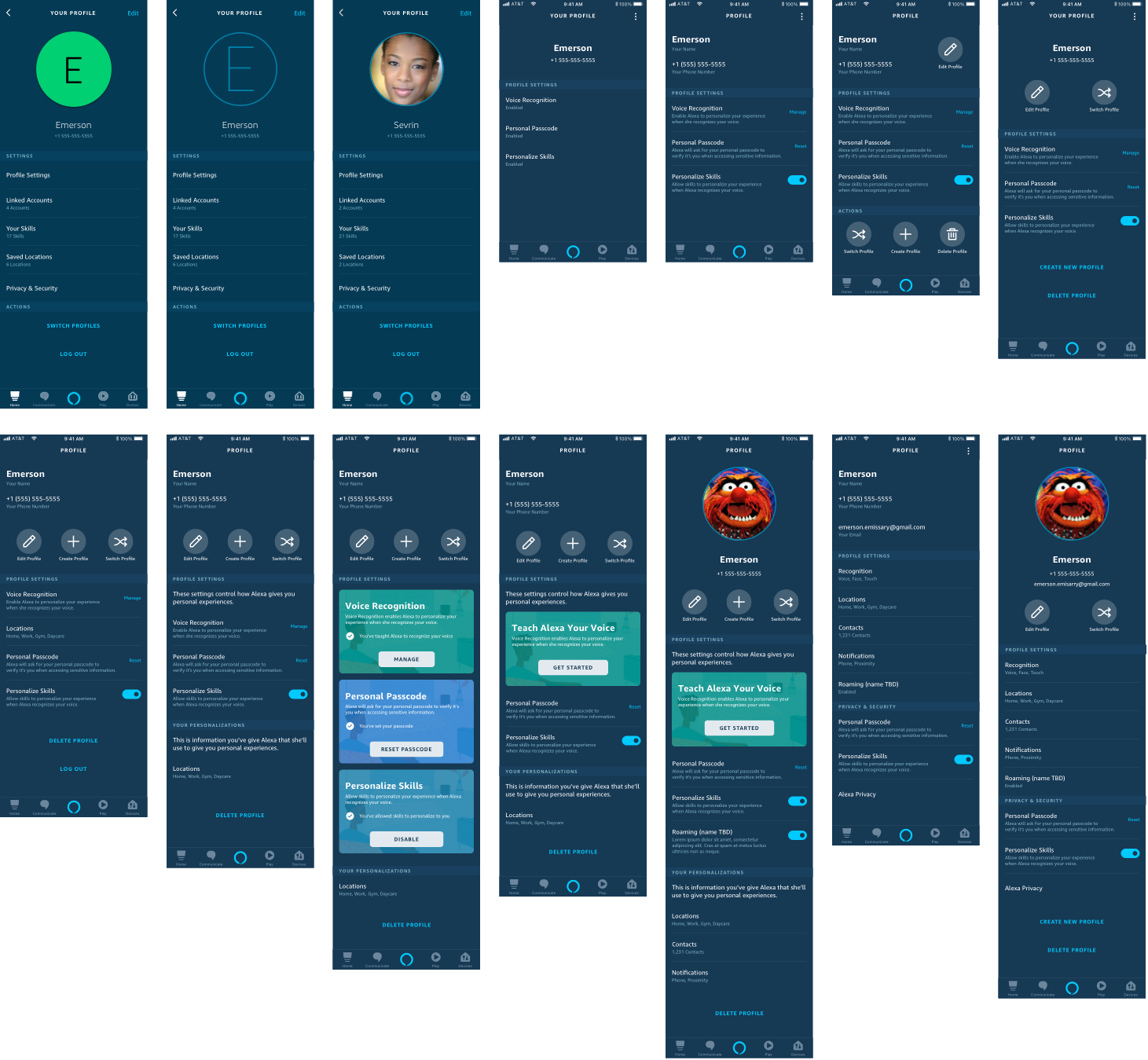
Where's it going to live?
Alexa had, at the time, more than 50 million accounts. I say accounts because before the launch of the profile, getting a count of how many individual people used Alexa was just a rough guess. Essentially everyone uses Alexa, so I needed to find the right place for it to be accessible and usable by everyone across the variety of Echo devices, Echo-enabled 3rd-party devices, the mobile app, web, and voice.
Leaders, peers, and teams alike had strong opinions on where it should go and how it should be accessed. The problem is no one agreed on an approach. Each was valid with it's own set of pros and cons. Putting the profile in the right place was critical for the success of the product and the overall Alexa Identity progam.
I needed data to solve this problem. However, this being a product that hasn't launched or available anywhere else in the Amazon ecosystem means there was no direct or anecdotal data available. So, I conducted a series or RITE (rapid iteration & testing experiments) using functional prototypes and UserTesting.com. Each test had a specific goal and design it was testing. Each test would provide valuable insights which I would roll into the next test.
This approach enabled me to provide a definitive and data-backed point-of-view that we launched with.
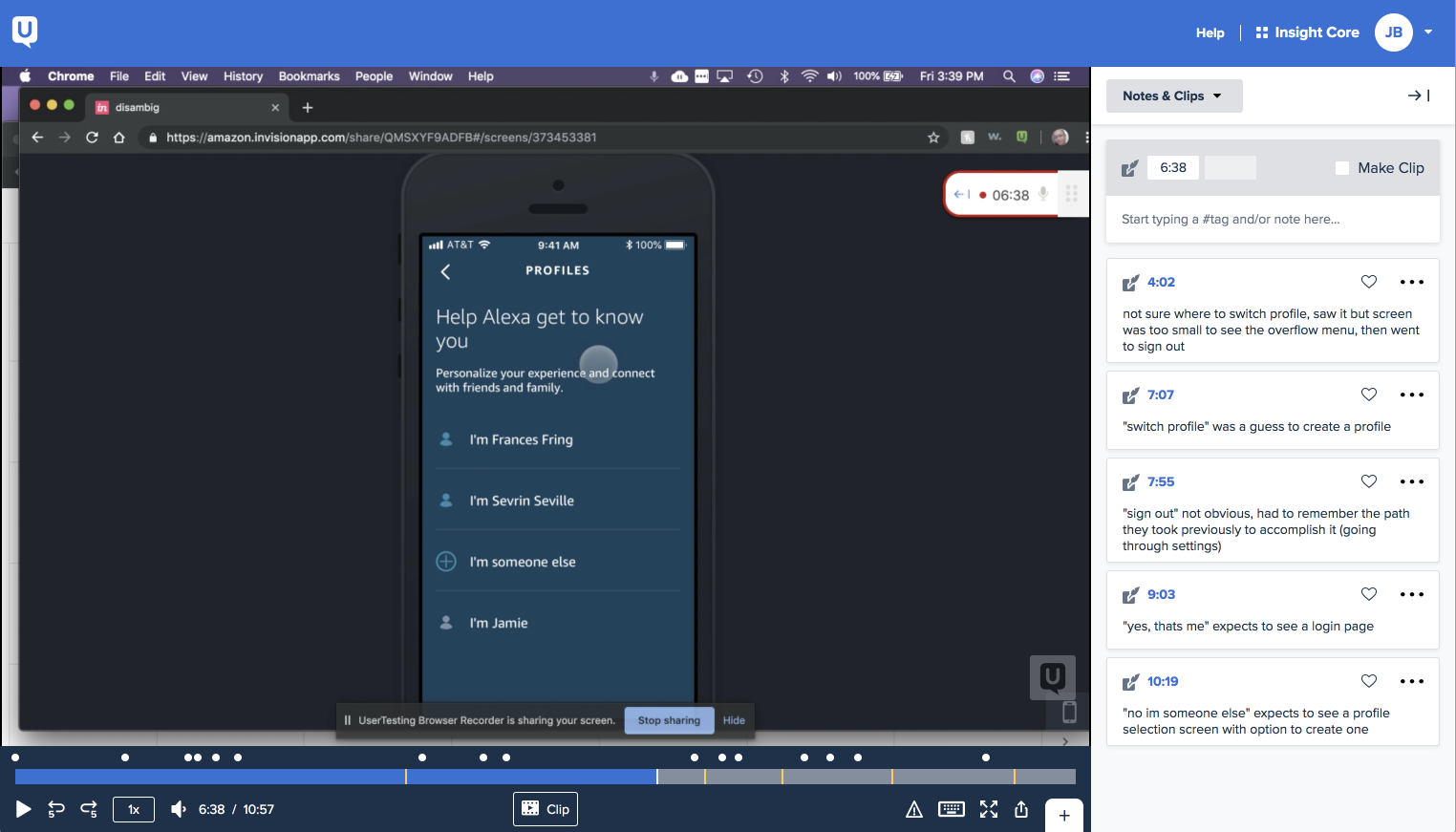
How is it a platform piece?
The profile was going to be central to the Alexa Identity platform and enable broad personalization across the Alexa ecosystem. Ensuring it worked a cohesive piece of the whole was critical to it's design.
Within the profile, it needed to support current platform features like voice recognition and the personal passcode.
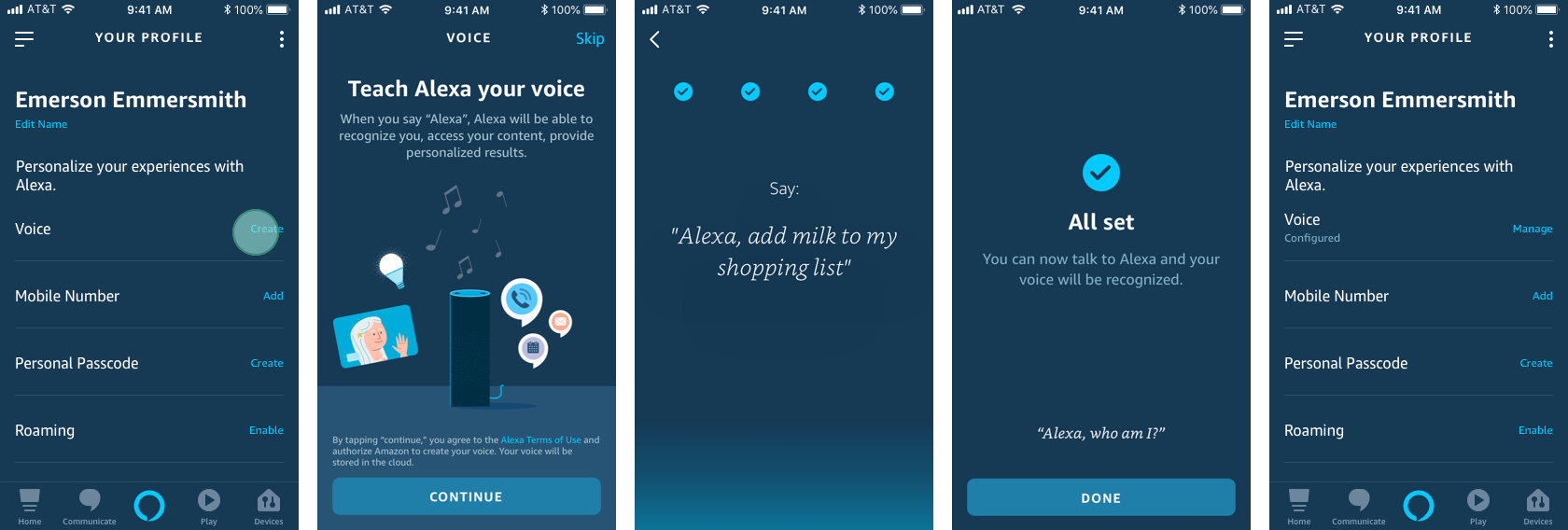
But it also needed to support things like attached accounts for things like music and email. And, a critical piece, was being able to switch to a different profile if you were using the wrong one. Overall, there were about 50 different edge-cases and flows that had to be explored and considered in order to design profile features that worked across the Alexa ecosystem.
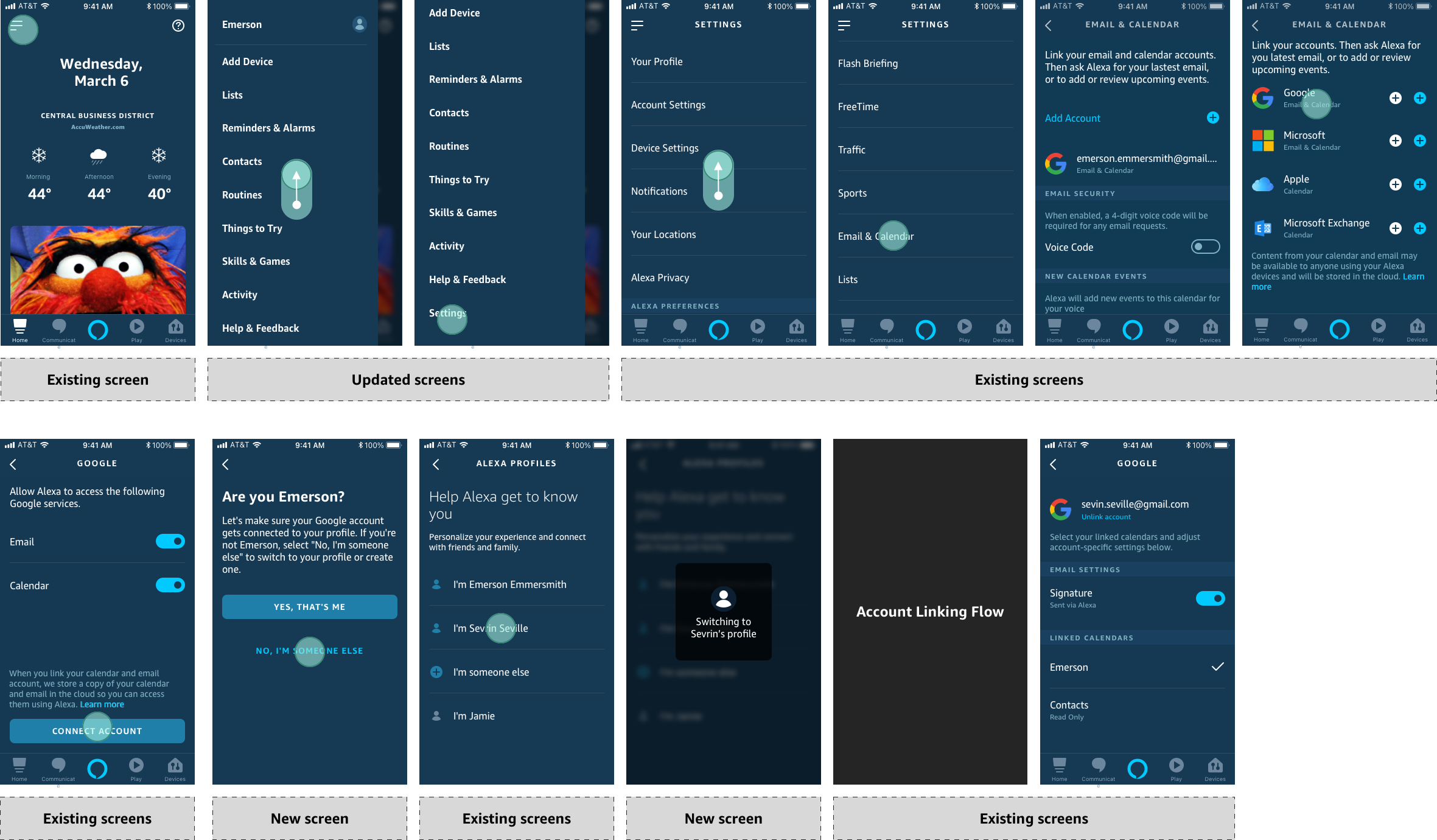
How will it scale?
The profile was going to be a durable, living product that needed to scale and evolve Alexa and Echo devices evolved. By focusing on basic needs and platform utility, I ensured that the profile can evolve and expand as needed.
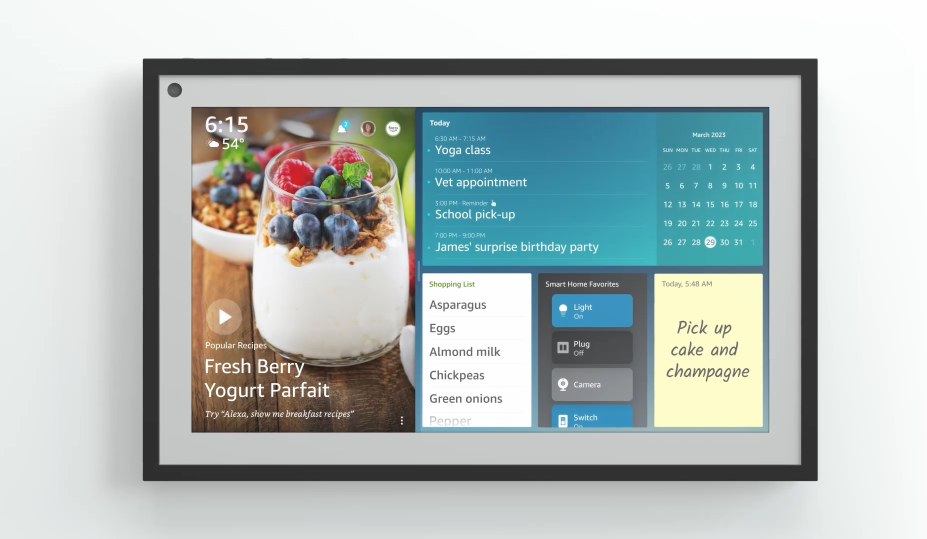
Press
- Alexa ProfilesAmazon
Want to talk about this project?